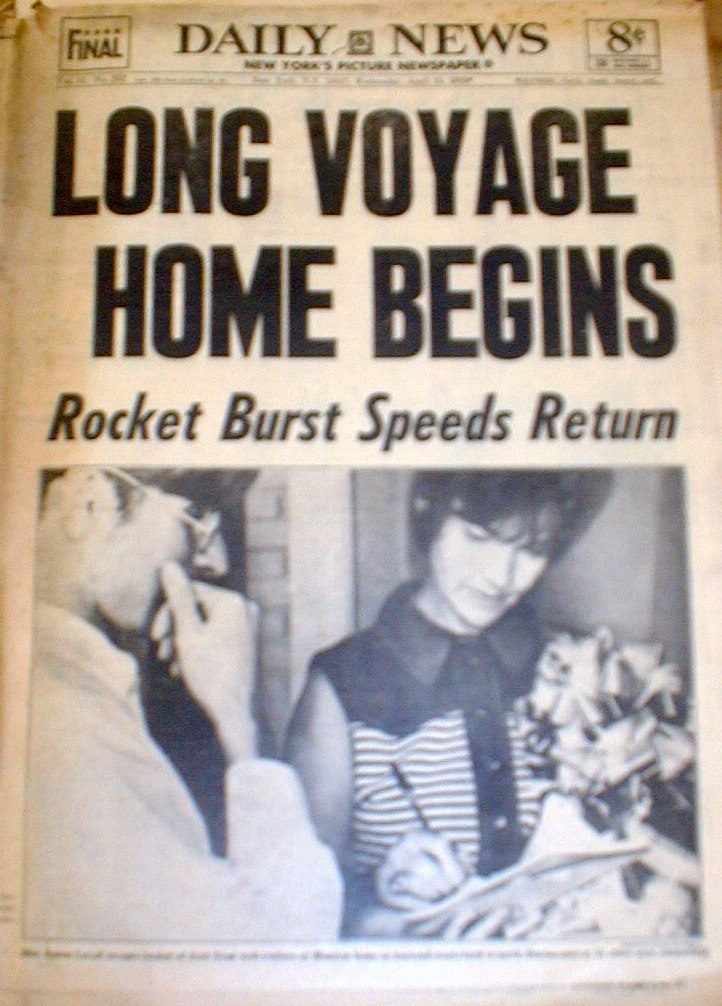
Apollo13 – view of the crippled Service Module after
separation.
On April 13, 1970, disaster struck 200,000 miles from Earth
when oxygen tank No. 2 blew up on Apollo 13, the third
manned lunar landing mission. Astronauts James A. Lovell,
John L. Swigert, and Fred W. Haise had left Earth two days
before for the Fra Mauro highlands of the moon but were
forced to turn their attention to simply making it home alive.
A routine stir of an oxygen tank ignited damaged wire
insulation inside it, causing an explosion that vented the
contents of both of the SM’s oxygen tanks to space.
Without oxygen, needed for breathing and for generating
electric power, the SM’s propulsion and life support systems
could not operate. The CM’s systems had to be shut down
to conserve its remaining resources for reentry, forcing the
crew to transfer to the LM as a lifeboat. With the lunar landing
canceled, mission controllers worked to bring the crew home
alive.




At NASA Mission Control in Houston’s Manned Spacecraft Center, Donald K. "Deke" Slayton, left, director of flight
crew operations, holds lithium hydroxide canisters attached
to a hose, a makeshift repair to reduce the dangerous levels
of carbon dioxide aboard the crippled spacecraft Apollo 13.

Place your comment